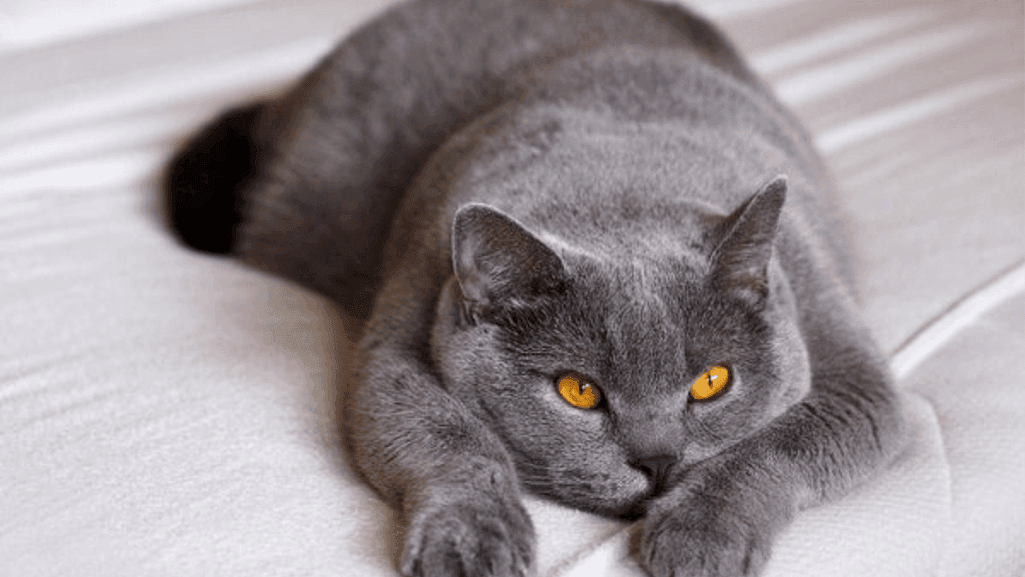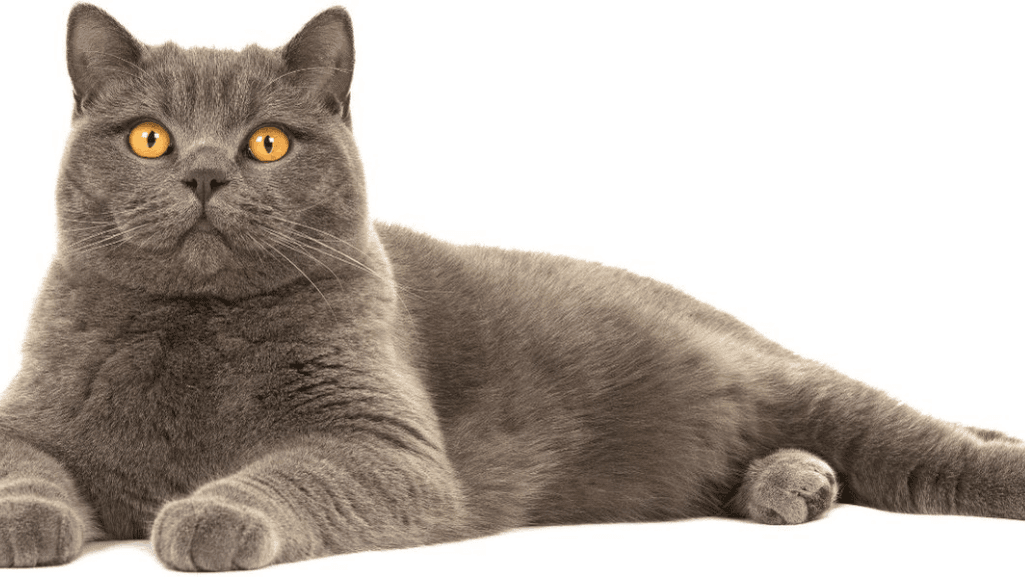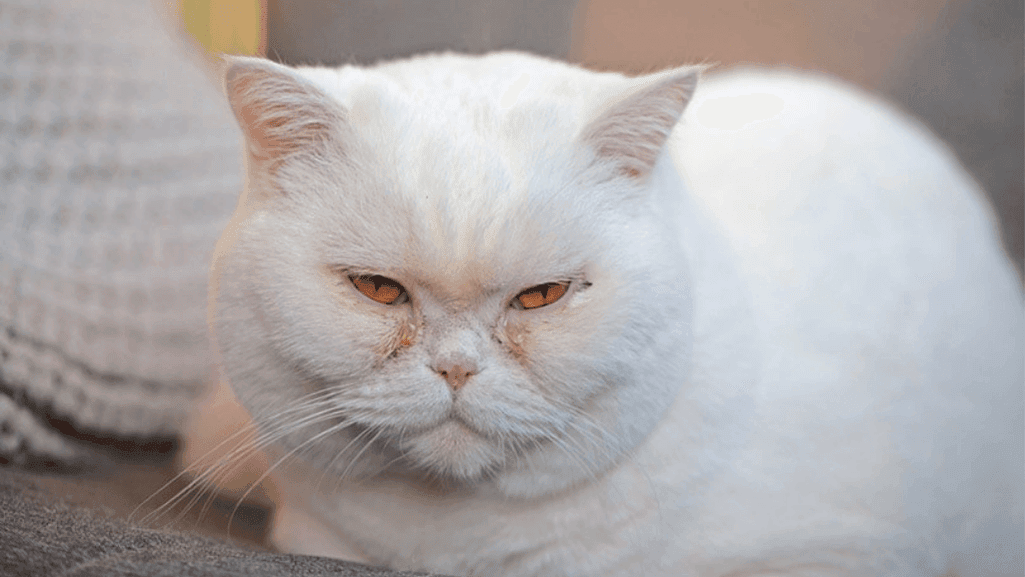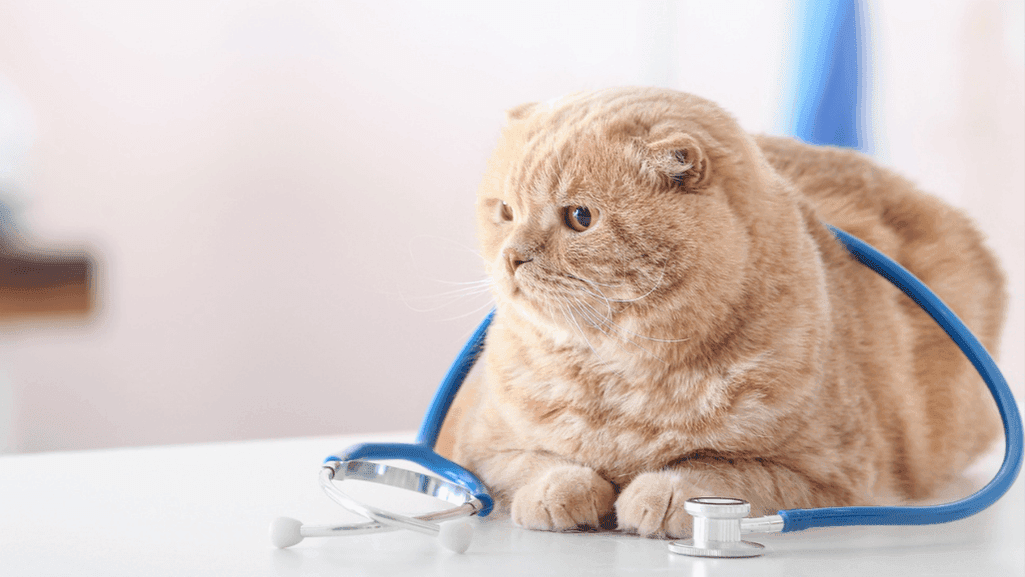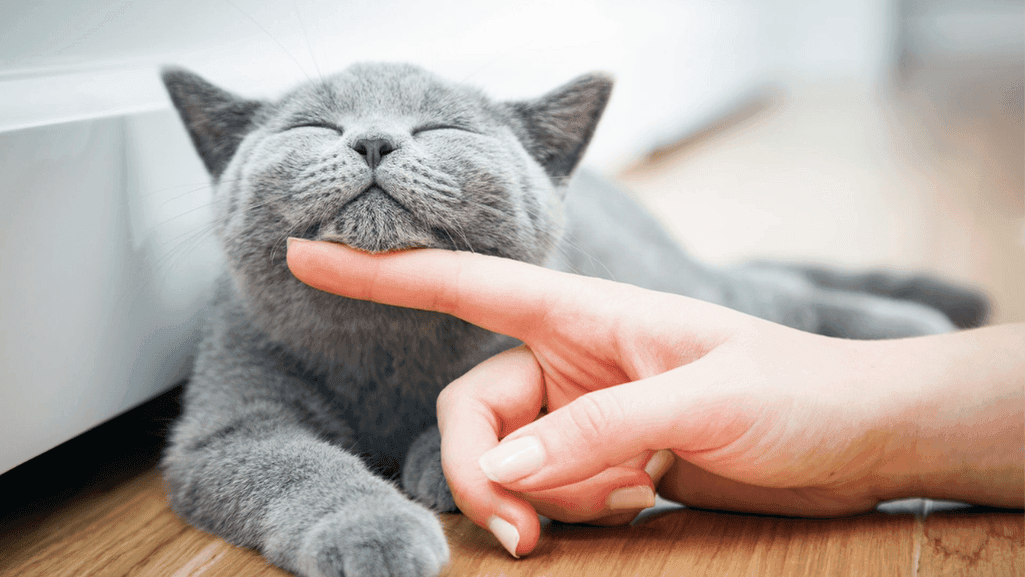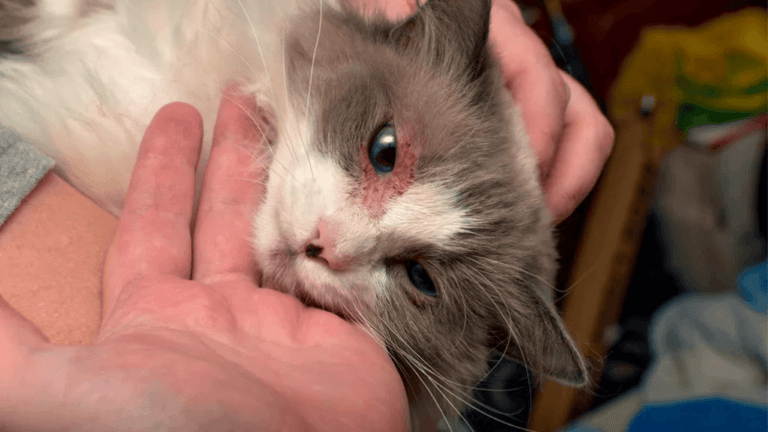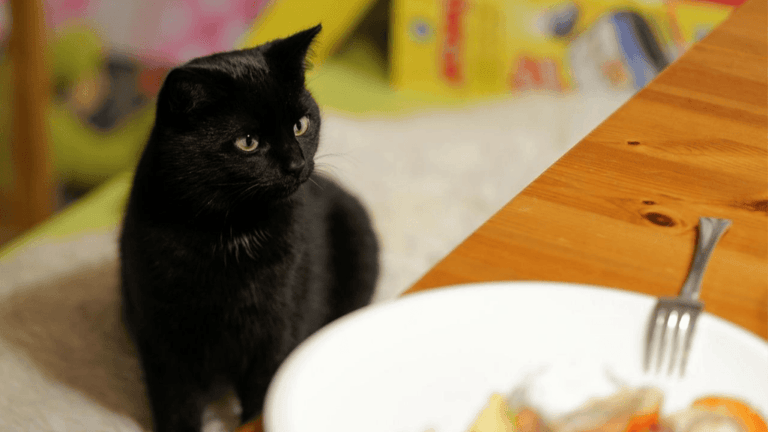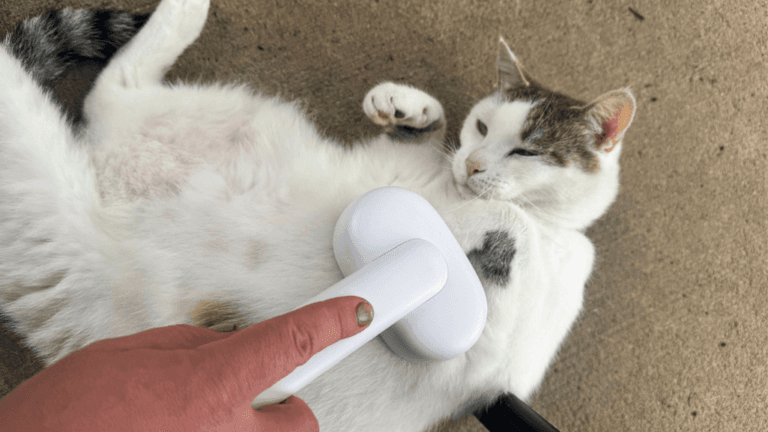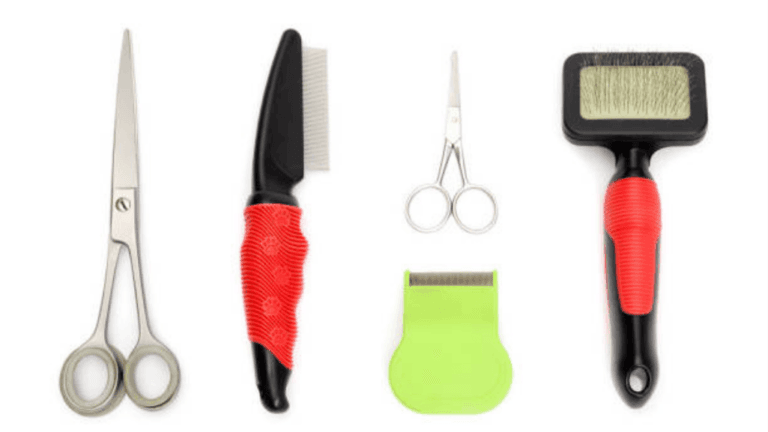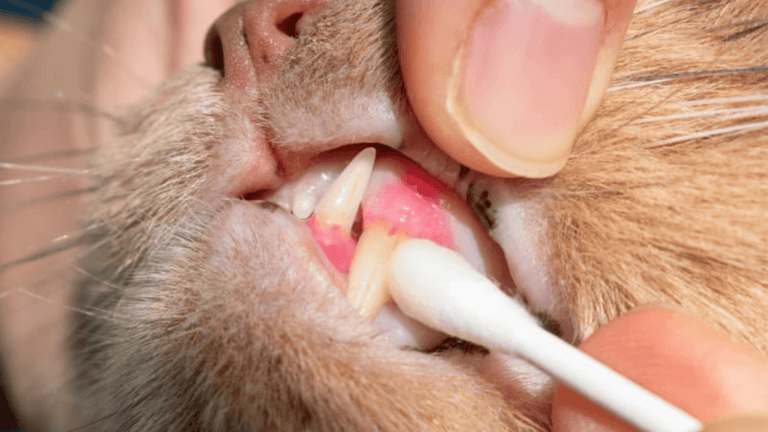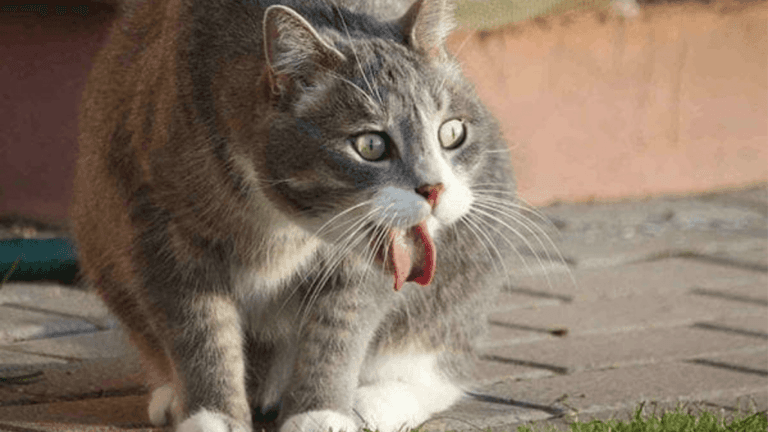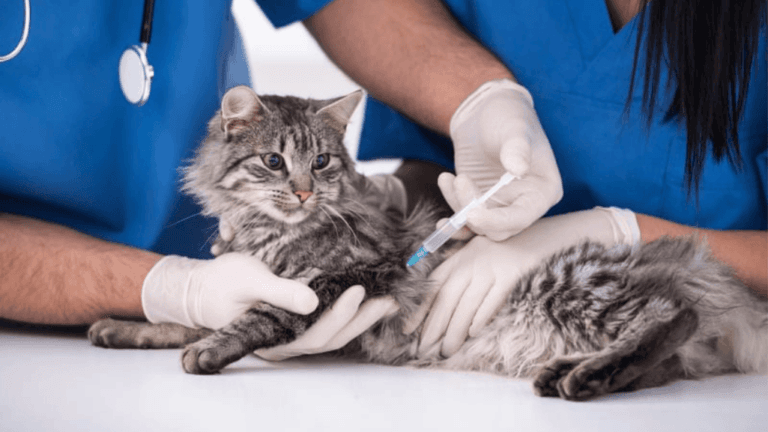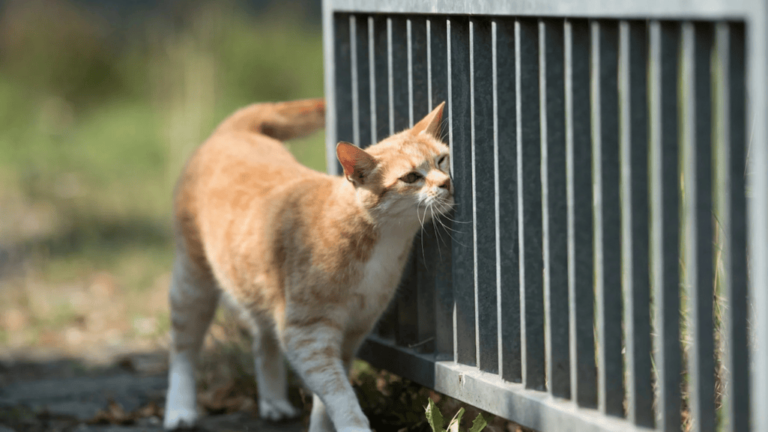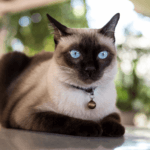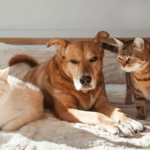British Shorthairs are known for being healthy and long-lived, with a lifespan of 12 to 20 years. Yet, they face specific health issues due to their purebred nature. It’s vital for potential owners to know about these british shorthair health problems to care for them properly.
Common british shorthair genetic diseases include heart disease and polycystic kidney disease. Other british shorthair common illnesses are feline lower urinary tract disease and eye issues like cataracts. Lifestyle-related feline health issues, such as dental and skin problems, also need attention.
Knowing about british shorthair medical issues helps owners care for their pets better. Regular vet visits, a healthy diet, and staying updated on british cat breeds medical conditions are key. By understanding british shorthair diseases and british shorthair health concerns, you can ensure your cat’s happiness and health.
Key Takeaways
- British Shorthairs are prone to genetic diseases such as heart disease and polycystic kidney disease.
- Common illnesses in British Shorthairs include feline lower urinary tract disease and eye problems like cataracts.
- Lifestyle-related health issues, such as dental problems and weight concerns, can affect British Shorthairs if not properly managed.
- Regular check-ups, a balanced diet, and staying informed about potential health issues are crucial for maintaining a British Shorthair’s well-being.
- Understanding and proactively addressing health concerns can help British Shorthairs live long, happy, and healthy lives.
Understanding the British Shorthair Breed
The British Shorthair is a beloved cat breed known for its distinct physical characteristics and endearing personality traits. It is one of the oldest and most popular cat breeds in the United Kingdom. This breed has captured many hearts with its charming appearance and gentle temperament.
Physical Characteristics of British Shorthairs
British Shorthairs are relatively large, solid cats with a sturdy build. They weigh between 9 and 16 pounds, with males typically being larger than females. They have a distinctive appearance, characterized by their large, round faces and wide-set ears.
One of the most striking features of the British Shorthair is its dense, plush coat. Their fur is short and thick, giving them a soft, teddy bear-like appearance. While the breed is most commonly associated with the iconic “British blue” color, they come in a wide array of coat colors and patterns.
It’s worth noting that British Shorthairs have a slower maturation rate compared to other cat breeds. They typically take 3 to 5 years to reach their full physical maturity. This contributes to their longer lifespan of 12 to 20 years.
Personality Traits of British Shorthairs
British Shorthairs are renowned for their friendly, relaxed, and adaptable nature. They are affectionate companions who enjoy the company of their humans. However, unlike some other breeds, they are not typically lap cats due to their dense fur.
The British Shorthair personality is friendly and calm, making them good family pets that adapt well to house or apartment living.
These cats are known for their laid-back temperament and ability to adapt to various living situations. They are not overly energetic or demanding, making them suitable for households with children, seniors, or individuals with busy lifestyles. British Shorthairs are content to spend time alone when their family is away, but they appreciate attention and playtime when their loved ones are present.
In terms of activity level, British Shorthairs are relatively low-maintenance. They do not require extensive physical activity or athletic pursuits, making them ideal for indoor living. Their gentle and easygoing nature, combined with their adaptability and intelligence, contribute to their popularity as beloved family pets.
| Characteristic | Description |
|---|---|
| Size | Large, weighing 9-16 pounds on average |
| Coat | Short, dense, and plush; various colors and patterns |
| Temperament | Friendly, calm, and adaptable |
| Lifespan | 12-20 years |
| Grooming | Easy, requiring only weekly combing |
Common Hereditary Health Issues in British Shorthair Health Problems
British Shorthairs are known for their health and strength. Yet, they can face certain health problems passed down through their genes. It’s key for pet owners to know about these issues to catch them early and manage them well. Heart disease, polycystic kidney disease (PKD), and hypertrophic cardiomyopathy (HCM) are common in this breed. Understanding these conditions and their signs helps you and your vet keep your cat healthy and happy.
Heart Disease in British Shorthairs
British Shorthairs are more likely to get heart disease, especially hypertrophic cardiomyopathy (HCM). This condition makes the heart muscle thick, often due to an overactive thyroid. It can cause heart failure, leading to symptoms like tiredness, hard breathing, or breathing too fast. HCM also raises the risk of blood clots, which can be deadly. While there’s no cure, medicine can help manage the disease and prevent serious problems.
Polycystic Kidney Disease (PKD) in British Shorthairs
Polycystic Kidney Disease (PKD) is another genetic issue in British Shorthairs. It’s caused by a faulty gene and leads to cysts in the kidneys and sometimes the liver at birth. These cysts grow over time, damaging the organs. PKD symptoms usually start around seven years old, including more thirst, urination, nausea, and tiredness. Early detection and care are vital to keep your cat’s quality of life good.
| Condition | Symptoms | Age of Onset |
|---|---|---|
| Hypertrophic Cardiomyopathy (HCM) | Rapid breathing, lethargy, sudden hind leg paralysis | Variable |
| Polycystic Kidney Disease (PKD) | Increased thirst, urination, nausea, lethargy | Around 7 years |
Feline Hypertrophic Cardiomyopathy (HCM) in British Shorthairs
Feline Hypertrophic Cardiomyopathy (HCM) is a heart disease specific to British Shorthairs. It makes the heart walls thick, reducing its function and leading to other health problems. Some cats with HCM may not show symptoms, while others may have signs of heart failure like tiredness, hard breathing, or breathing too fast. HCM also raises the risk of a life-threatening condition called arterial thromboembolism, which can cause sudden paralysis and pain in the hind legs. Early diagnosis and treatment can improve your cat’s life and reduce the risk of serious complications.
British Shorthair cats have impressive lifespans that can reach 20 years or more with proper care and attention to their health needs.
Feline Lower Urinary Tract Disease (FLUTD) in British Shorthairs
British Shorthair cats often face feline lower urinary tract disease (FLUTD). This condition affects the bladder and urethra. Symptoms include frequent urination, straining, blood in the urine, and accidents outside the litter box. If not treated, FLUTD can cause serious problems like urethral obstruction, which is dangerous.
- Feline idiopathic cystitis (FIC): This is the most common cause of FLUTD in cats, accounting for up to 56% of cases in some studies. FIC is an inflammation of the bladder wall that has no known cause.
- Urinary tract infection (UTI): UTIs are caused by bacterial infections in the bladder or urethra and can lead to symptoms such as frequent urination, straining to urinate, and blood in the urine. UTIs account for approximately 25% of FLUTD cases in cats.
- Urolithiasis: This condition is caused by the formation of bladder stones, which can block the urethra and cause urinary obstruction. Urolithiasis is diagnosed in around 13% of FLUTD cases in cats.
- Urethral plugs: These are accumulations of debris, such as mucus and crystals, that can block the urethra and cause urinary obstruction. Urethral plugs occur in approximately 4.9% of FLUTD cases in cats.
The symptoms of FLUTD in British Shorthairs can vary. They may include:
| Symptom | Percentage of FLUTD Cases |
|---|---|
| Hematuria (blood in urine) | 40.4% |
| Stranguria (difficulty urinating) | 45.3% |
| Pollakiuria (frequent urination) | 11.9% |
| Dysuria (painful urination) | 6.0% |
| Periuria (inappropriate urination) | 3.2% |
Male British Shorthairs are more likely to develop FLUTD than females. The risk increases with age. Obesity, stress, and a diet high in magnesium can also increase the risk of developing FLUTD.
If you suspect that your British Shorthair has FLUTD, it is important to seek veterinary care as soon as possible. Your veterinarian may recommend diagnostic tests such as urinalysis, blood work, and imaging to determine the underlying cause of the condition.
Treatment for FLUTD in British Shorthairs depends on the cause. It may include antibiotics for UTIs, dietary changes, and medications for pain and inflammation. In severe cases, like urethral obstruction, hospitalization and surgery may be needed.
To prevent urinary issues, provide a balanced diet, fresh water, and regular vet visits. Keeping your cat at a healthy weight and reducing stress can also help prevent FLUTD.
Eye Problems in British Shorthairs
British Shorthair cats are usually healthy, but they can face eye issues like any other breed. It’s key for pet owners to know about british shorthair eye diseases and vision problems that might affect their pets.
Cataracts in British Shorthairs
Cataracts are common in older British Shorthairs, similar to other breeds. This condition makes the eye lens cloudy or opaque, which can cause blindness if not treated. Removing the affected lens is a common treatment for cats with cataracts.
Several factors can lead to cataracts in British Shorthairs, including:
- Genetics
- Eye injury or trauma
- Inflammation or infection
- Diabetes
- High blood pressure
- Nutritional imbalances
- Inability to metabolize certain proteins
Other Eye Issues in British Shorthairs
Besides cataracts, British Shorthairs may face other eye problems, such as:
- Glaucoma – increased eye pressure, causing pain and vision loss
- Corneal ulcers – open sores on the cornea from injury or infection
- Conjunctivitis – inflammation of the eye and inner eyelid membrane
- Retinal detachment – retina separation from underlying tissue, leading to vision loss
Regular vet visits can catch and treat british shorthair vision issues early. This improves treatment chances and keeps your cat’s eyesight.
| Eye Problem | Symptoms | Treatment Options |
|---|---|---|
| Cataracts | Cloudy or opaque lens, vision loss | Surgical removal of affected lens |
| Glaucoma | Enlarged eye, pain, vision loss | Medications, surgery |
| Corneal Ulcers | Red, painful eye, discharge, squinting | Antibiotics, pain relief, surgery |
| Conjunctivitis | Red, swollen conjunctiva, discharge | Antibiotics, anti-inflammatory drugs |
| Retinal Detachment | Sudden vision loss, dilated pupils | Surgery, medications |
By knowing about british shorthair eye problems and keeping up with vet visits, you can ensure your British Shorthair stays healthy and happy with clear vision.
Lifestyle-Related Health Concerns in British Shorthairs
British Shorthairs are generally healthy, but they can face certain health issues. Excess weight is a big problem, leading to arthritis, diabetes, and other serious diseases. Being overweight can shorten a cat’s life by two years and cause arthritis two years early.
Obesity also raises the risk of diabetes. Fatty liver disease can happen quickly in overweight cats, leading to serious health problems.
Dental disease is common in cats, causing gum and tooth infections if not treated. Regular dental care is key for their oral health. Parasites like fleas and ticks can also harm cats, causing pain and even death. Preventative measures like deworming and flea/tick control are important.
Preventing Health Issues in British Shorthairs
You can’t prevent inherited illnesses, but a good diet and lifestyle can help manage them. Regular vet visits, a balanced diet, and keeping your cat at a healthy weight are crucial. Knowing the early signs of diseases is also important.
- Rapid breathing
- Poor appetite
- Lethargy
- Inability to walk properly
- Abnormal urination
- Frequent licking in the genital region
Quick action and proper treatment from vets are key to managing health issues. Vaccinations can prevent infections like panleukopenia and rabies. Spaying or neutering can also reduce cancer risks and unwanted pregnancies.
According to internal claims data from 2019, the top 5 most common health issues that affect British Shorthairs include diabetes, digestive issues, unsettled stomach, ear infections, and cancer.
By focusing on wellness and preventative care, owners can help their cats live longer, healthier lives. Recognizing illness symptoms early and getting prompt vet care is crucial in managing diseases.
Dental Health in British Shorthairs
Keeping your British Shorthair’s teeth clean is key to their health. Like other cats, they can get dental problems. These issues can cause pain and serious health problems if not treated. It’s important to know about these problems and how to prevent them.
Common Dental Issues in British Shorthairs
British Shorthairs often face dental issues such as:
- Gingivitis: Inflammation of the gums, affecting up to 26.6% of domestic cats
- Periodontitis: Advanced gum disease that can lead to tooth loss
- Tooth resorption: A condition affecting 28.5-67% of domestic cats, where the body absorbs the tooth structure
- Feline Chronic Gingivostomatitis (FCGS): A severe, painful inflammation of the gums and oral mucosa
FCGS is a serious dental problem in cats. It can cause autoimmune issues where the body attacks its own dental tissue. Cats with FCGS often have immune system problems. Viruses like calicivirus, feline leukemia virus (FeLV), and feline immunodeficiency virus (FIV) may contribute to its development.
In a study, 80% of cats with FCGS benefited from a full mouth dental extraction, although it is not a guaranteed cure.
Maintaining Good Dental Hygiene in British Shorthairs
To keep your British Shorthair’s teeth and gums healthy, follow these tips:
- Brush your cat’s teeth daily using a cat-specific toothbrush and toothpaste
- Provide dental treats and chew toys to help remove plaque and tartar buildup
- Feed a balanced diet and avoid highly processed foods high in grains and sugar
- Offer dry food occasionally to help remove debris from teeth
- Schedule regular dental check-ups with your veterinarian
| Age | Number of Teeth |
|---|---|
| Kittens | 26 baby teeth |
| Adult cats | 30 teeth (16 on top, 14 on bottom) |
Remember, 50-90% of cats over four years old experience dental illness. By focusing on your British Shorthair’s dental health and working with your vet, you can prevent pain and ensure a happy life for your cat.
Coat and Skin Care for British Shorthairs
British Shorthairs have soft, dense coats. They need regular care to stay healthy. Brushing them once or twice a week helps remove loose hair and keeps their coat shiny.
Even though they shed less, British Shorthairs can still cause allergies. Skin problems or too much shedding can be a sign of health issues. Regular grooming helps spot these problems early.
Some common skin issues in British Shorthairs include:
- Parasitic infestations (fleas, ticks, mites)
- Allergies (food, environmental)
- Stress-induced overgrooming
- Fungal or bacterial infections
To keep their coat and skin healthy, follow these grooming tips:
| Grooming Task | Frequency |
|---|---|
| Brushing | Once or twice a week; more during shedding seasons |
| Bathing | Every 4-6 weeks or as needed |
| Nail trimming | Every 2-4 weeks |
| Ear cleaning | Weekly, using a veterinarian-approved cleaner |
| Dental care | Brush teeth 2-3 times a week with pet-safe toothpaste |
Regular grooming not only keeps your British Shorthair looking their best but also allows you to bond with your cat and identify any potential health concerns early on.
By paying attention to your British Shorthair’s coat and skin, and sticking to a grooming routine, you can keep them healthy and happy for years.
Nutritional Requirements for British Shorthairs
British Shorthair cats need specific nutritional requirements to stay healthy. They are prone to obesity and digestive issues. So, it’s important to give them a diet that meets their needs.
The Importance of a Balanced Diet for British Shorthairs
A good diet for British Shorthairs should have high-quality protein, vitamins, and minerals. It should also have fewer carbs. Protein helps keep their muscles strong and supports their health. They should eat at least 50% protein, based on their weight.
They need 44–53 calories per kilogram of body weight each day. This should be spread over two to five small meals. Proper hydration is also key, as they can get urinary tract issues. Adult cats need 50 to 70 milliliters of water for every kilogram of body weight daily.
Wet food can help them drink more water. It has over 75% moisture, unlike dry food which has about 10%.
Feeding Tips for British Shorthairs
Feeding British Shorthairs depends on their age and nutritional needs. Kittens need more energy, protein, and vitamins than adult cats. They start weaning between 3 to 6 weeks old. Kittens need a diet rich in protein and energy for growth and digestive health.
Adding certain nutrients and supplements can be good. Prebiotics help with digestion, while omega-3 fatty acids support brain development. L-carnitine helps with fat metabolism, and antioxidants like vitamin E boost their immune system.
“A well-balanced diet is your best bet at controlling inherited diseases and keeping your feline happy. Whatever type of cat food you choose—wet, dry, semi-moist, raw, or homemade—it must be rich in animal protein, low in carbs, and hydrating.”
To summarize, a balanced diet for British Shorthairs should include:
- High-quality animal protein sources
- Appropriate levels of vitamins and minerals
- Limited carbohydrates
- Adequate hydration
- Age-specific nutritional requirements
- Beneficial supplements and nutrients
By tailoring their diet and consulting a vet, owners can prevent health issues. This ensures their cats stay healthy and at a good weight.
Exercise and Weight Management in British Shorthairs
British Shorthairs are known for being calm and laid-back. This can lead to a sedentary lifestyle. As they age, they tend to move less, which can cause weight gain and health problems like joint issues and heart disease. It’s important to make sure they get enough exercise and eat right to stay healthy.
Keeping British Shorthairs Active Indoors
British Shorthairs may not be super energetic, but they love to play. Interactive toys like laser pointers and feather wands can keep them active. Playing with them daily not only keeps them fit but also strengthens your bond.
Creating a fun indoor space is also key. Cat trees, scratching posts, and window perches encourage climbing and exploring. This helps keep their muscles and joints healthy. Changing toys regularly keeps them interested and active.
Preventing Obesity in British Shorthairs
British Shorthairs love to eat and are prone to obesity. It’s important to watch their calorie intake and feed them a balanced diet. They need between 165 to 310 calories a day, depending on their size and activity level.
Choose high-quality, protein-rich food for them. Wet food is a good choice because it’s more protein and water. Avoid overfeeding and stick to a regular meal schedule to prevent weight gain.
| Age | Male Weight (kg) | Female Weight (kg) |
|---|---|---|
| Adult (fully grown) | 4.0 – 7.7 | 4.0 – 5.4 |
| 3 years old | 4.5 | 4.2 |
Regular weigh-ins and body checks are crucial. They help you see if your cat is gaining too much weight. If they are, talk to your vet about a weight loss plan.
Maintaining a healthy weight is essential for preventing obesity-related health issues in British Shorthairs, such as diabetes, heart disease, and joint problems.
By focusing on regular play and a balanced diet, you can help your British Shorthair stay healthy. This ensures they live a long, happy life.
Regular Veterinary Check-ups for British Shorthairs
British Shorthairs need regular vet visits to stay healthy. These visits help catch health problems early. This ensures your cat lives a long, happy life.
Your vet will do a full check-up during these visits. They’ll look for any health issues and give your cat important vaccinations. This protects against diseases like panleukopenia and rabies.
They might also suggest extra vaccines based on your cat’s life and where you live. This helps keep your cat safe from specific health risks.
These visits are also key for spotting genetic health problems. For example, polycystic kidney disease (PKD) can affect British Shorthairs. Your vet can find this with tests and start treatment early.
A well-maintained British Shorthair cat can prevent health issues through regular vet check-ups which can help catch potential health issues early on.
Your vet will also check your cat’s teeth. Cats often get dental problems. They might need professional cleanings to keep their teeth healthy.
It’s also important to watch your cat’s health at home. Look for changes in eating, behavior, or litter box habits. These can mean health problems. By working with your vet and keeping up with vet visits, you’ll give your cat the best care.
| Age | Recommended Check-up Frequency |
|---|---|
| Kitten (birth to 1 year) | Every 3-4 weeks until 16 weeks, then every 6-12 months |
| Adult (1-7 years) | Annually |
| Senior (7+ years) | Every 6 months |
Following this schedule for vet visits helps your cat stay healthy. It ensures they live a long, happy life with you.
Conclusion
British Shorthair cats are loved for their calm nature, adaptability, and beautiful looks. They are generally healthy, living between 12 to 20 years. But, owners need to watch out for health issues to keep their cats happy and healthy.
It’s important to take your British Shorthair for regular vet visits, at least once a year. A balanced diet, keeping them at a healthy weight, and enough exercise and mental play are key. Also, don’t forget about their dental health, coat care, and watching for signs of heart or kidney disease.
Knowing how to care for your British Shorthair can make a big difference in their life. They depend on you for their health and happiness. With the right care and attention, your British Shorthair can live a long, happy life with your family.

